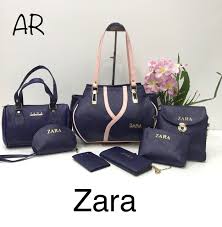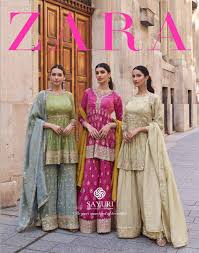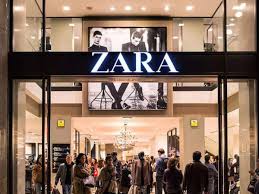
Introduction
No fashion brand has affected the fashion industry as Zara has done in the world of fashion. For years, the brand has amazed the fast-fashion world with the ability to take runway trends from the runways to the racks in record time. Whether it’s a new season’s collection or a limited-edition collaboration, no one has made an influence in the world of fast fashion as it has. In this article, we are going to delve into how Zara has been able to sustain its leadership in the fashion world, the business model that made it successful, and why it remains the go-to brand for those fashion-conscious people.
The Rise of Zara: A Brief History
Zara was founded in 1974 in Arteijo, Spain. It was a small family-owned store selling affordable fashion items. The success story of the brand began when its founders, Amancio Ortega and Rosalía Mera, revolutionized the fashion industry by creating a business model that allowed them to quickly replicate high-end fashion trends and bring them to the masses. It’s commitment to providing stylish, affordable clothing without compromising on quality was the key to its early success.
However, one of the most impressive features of the it brand was its ability to change with the times. In contrast to most of the entrenched fashion retailers, it was able to adopt contemporary technology and logistics to implement rapid turnaround times for new designs. As such, it managed to produce collections and deliver them to stores in weeks rather than months, hence making this a true epitome of “fast fashion.”
The Fast Fashion Model: How Zara Works
What distinguishes Zara from the rest of the fashion brands is its innovative approach to the fashion supply chain. Famous for its “just-in-time” production method, it’s design-to-production cycle is the shortest in the industry. Other fashion retailers usually take months to design, manufacture, and distribute clothing, but it completes this process within a few weeks. This speed enables it to offer its customers the latest styles, often before they are seen on the runway.
The brand’s agile supply chain is powered by a unique in-house production system. Unlike other brands that outsource production to multiple countries, it controls much of its manufacturing and design process. This not only ensures better quality control but also gives the brand the flexibility to make quick changes in response to consumer demand. It can create new designs, manufacture them, and deliver them to stores within weeks, making it one of the fastest fashion brands in the world.

Zara’s Business Strategy: Why It’s So Successful
Several factors contributes huge success, but one of the most notable is its ability to anticipate and respond to the fashion trends. It’s designers continuously watch runway shows, street fashion, and emerging trends to create designs that will reflect the newest fashion movements. This allows it to stay ahead in the competition by delivering designs that are not only trendy but also accessible.
The model of low inventory also saves it from the risk associated with unsold merchandise. Since Zara produces a limited number of each design, this helps create a sense of urgency in consumers to buy the products before they are out of stock. Such a scarcity-driven strategy has been most productive for it as it makes the consumers to prefer purchasing the goods now rather than waiting.
Another significant part of it’s business approach is its attention to customer response. The company heavily relies on real-time data collection, using in-store and online analytics to determine customers’ preferences. It takes this data into consideration when formulating future collections and making necessary changes to existing stock. Thus, the brand is always keeping its offerings up to date with the tastes of its customers.
Zara Brand: Affordable Luxury for the Masses
A leading fashion trend for the brands that have a liking for is to provide affordable luxury. The Zara collection curates each and every article in a style so that all people will get access to high-fashion products without facing any heavy amount of price, thereby making people go crazy. It provides luxury clothes at lesser prices with fine materials and outstanding designs.
Aside from its core collections, Zara often comes out with special pieces and collaborations with famous designers. Exclusive pieces enable the customer to indulge in a little luxury but within budget. The following points are why it sustains popularity with affordability and luxury as crucially balanced elements.
The Role of Sustainability in Zara’s Business Model
Sustainability has increasingly been a hot issue in the fashion world, and this is the motivation for which Zara made certain steps toward dealing with those concerns. They also have opted for using more organic cotton and recycled fabric in its collection. Another development of it in addressing sustainability has come through their environmentally friendly packaging while cutting down the carbon footprint through supply chain systems.
However, Zara has been criticized for its fast fashion model, which some argue contributes to environmental degradation and overconsumption. The brand has responded by setting ambitious sustainability goals, including reducing waste and improving the durability of its products. While it may take time for it to fully embrace sustainable fashion, its efforts show that the brand is aware of the importance of environmental responsibility.
Global Reach and Influence of Zara Brand
Presently, Zara operates in more than 90 countries and currently has more than 2,000 stores located worldwide. Being widespread is the prime reason behind global growth, with great business acumen. This will help the group to have extensive leadership as both developed and emergent markets attract the group under its name in the current arena.
Not only is it strong in terms of its physical stores, but it also boasts an impressive online presence that lets customers easily shop from home. Zara’s e-commerce site replicates the in-store experience, so there is no disjointed feeling when shopping through either touchpoint. As online shoppers become the new norm, it has adapted its brick-and-mortar with its digital platform to create an experience that’s truly cohesive across touchpoints.
Challenges Encountered by the Zara Brand
Though Zara has been performing remarkably well, this brand has various challenges within the dynamic landscape of fashion. Competition from fast-fashion chains like H&M and Uniqlo has significantly increased over the years. This makes it have to remain at the forefront, innovating in order to distinguish itself and lead the competition in the ever-changing fashion market.
One challenge Zara continues to face is constant pressure on the brand to better its sustainability measures. Though it has shown a lot of promise in sustainability, it faces environmental activism who hold that the fast-fashion model in itself is unsustainable. In meeting this increasing need for sustainable fashion, it must continue perfecting its systems and investing more in sustainable measures.
Conclusion
The Zara brand has undoubtedly changed the face of the fashion world. Its ability to deliver high-fashion trends quickly, affordably, and at scale has made it a global leader in the fast fashion space. Though the brand is facing many challenges related to sustainability and growing competition, it remains well positioned for success by virtue of its dedication to innovation and customer satisfaction. Whether you shop for a trendy wardrobe update or seek affordable luxury, it remains a favorite among fashion-conscious consumers around the world.

Conclusion: Why Zara Brand Remains Dominant in the Fast Fashion Industry
It has been a fashion giant because of its ability to bring forward-thinking fashion sense together with operational efficiency. It has managed to stay ahead in the fast-fashion industry by concentrating on speed, quality, and customer satisfaction. Thus, it is no wonder that the brand enjoys a loyal global following. Being at the forefront of sustainability business strategy, it has all the potential to continue thriving in the competitive world of fashion. Whether you are already a long-standing fan or come to the brand for the first time, Zara will continue to shape fashion’s future.
